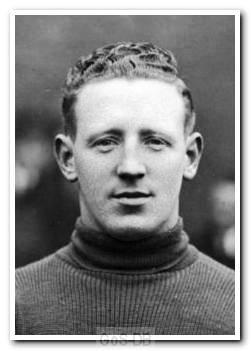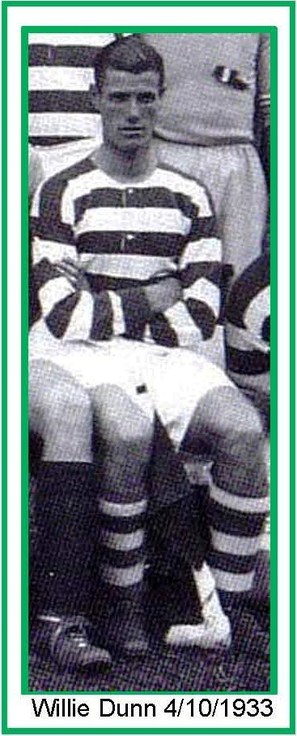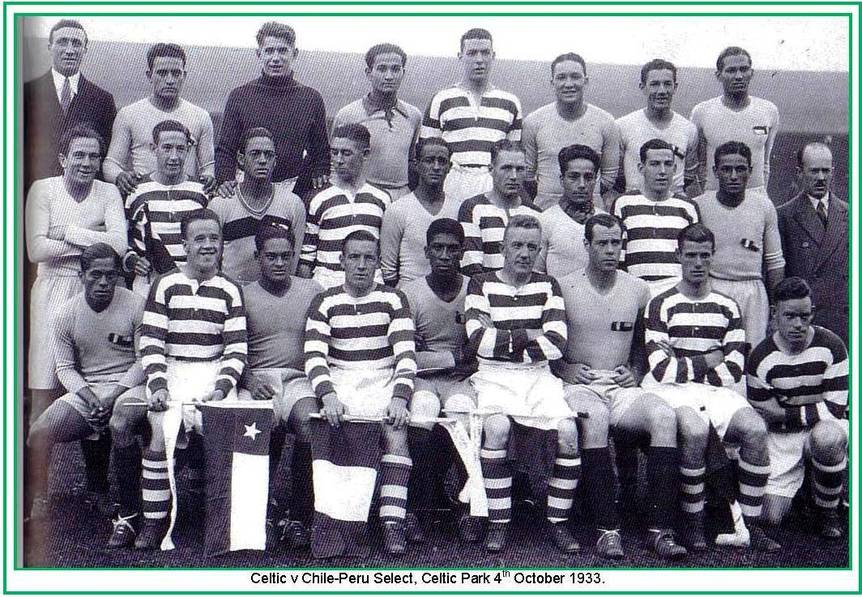Patrick ‘Paddy’ Moore is another intriguing character from that period. Moore made his international debut for the Irish Free State in a friendly against Spain in Barcelona on 26 April 1931, whilst still a Shamrock Rovers player, marking the occasion with the Irish goal in a 1-1 draw. He then won his second cap the following May, scoring again in a 2-0 victory over the Netherlands in Amsterdam. Making his Irish debut that night was Alex Stevenson, mentioned earlier in this piece, then with Dublin-based Dolphin, who Moore’s Shamrock Rovers had just defeated in the FAI Cup final weeks earlier. Small world syndrome strikes again.
Both men would move to Scotland that August, Stevenson to Rangers and Moore to Aberdeen, as did another two of his teammates, Irish captain Joe O’Reilly and Jimmy Daly. Whilst the others did not shine at Pittodrie, Moore became a star, scoring 27 goals in just 29 league games in his first season. He made his debut at Parkhead in a 3-0 opening day defeat on Saturday, 13 August 1932, then found himself on the winning side in the return at Pittodrie on Christmas Eve, thanks to a Jack Beattie goal.
The following season, he would score in both League fixtures against Celtic, grabbing the third in a 3-0 victory at Pittodrie in October 1933, when Willie Dunn was the opposing centre-forward, then the Dons’ first in the 2-2 draw at Celtic Park in February 1934, when Dunn had scored, as described above.
However, Moore’s greatest achievement would be in the green shirt of Ireland, just the day after he had played for Aberdeen at Celtic Park. In just his third international appearance, a World Cup qualifier against Belgium at Dalymount Park, Dublin, on Sunday, 25 February 1934, he scored all four goals for the hosts as they came from behind three times to earn a 4-4 draw.

In doing so, he became the first player to net a quadruple of goals in one match in the history of the World Cup. Continuing the ‘small world’ theme from earlier, in goal for the Free State that day was Jim Foley, the young Celtic reserve keeper who would be attacked by a spectator at Tynecastle then ludicrously charged with assault in the aftermath, a story covered in a previous part of this series.
Both Foley and Moore would line-up against the Dutch in the Olympic Stadium in Amsterdam on Sunday, 8 April 1934, for the second and final qualifier for the Irish in the three-team group. Paddy scored again, as he had in his previous visit there two years earlier. However, this time Netherlands would win 5-2, following that up in May with a 4-2 victory over Belgium in Antwerp, both neighbours qualifying for the finals in Italy that summer.
Moore’s club manager, former Celtic forward Paddy Travers, had accompanied him from Glasgow to his international date of destiny with Belgium. It would later transpire that the player was suffering from alcohol dependency, missing a game in Switzerland due to the amount of drink he had consumed beforehand. He returned to Shamrock Rovers in 1935 and would later enjoy a third spell there before the war. Unfortunately, the alcohol would take its toll, Paddy passing away in July 1951, aged just 41.
Seven months after the Parkhead clash where both Dunn and Moore had scored (I see what you did there- Ed), Willie returned to the Celtic team for the trip to Dens Park, on Monday, 1 October 1934, one of five changes following the 2-1 defeat by Albion Rovers at Cliftonhill two days earlier.

Dunn received some praise for his performance as the game ended goalless. He did enough to retain his place the following Saturday, where Queen of the South were the visitors, Jimmy Delaney’s early goal giving the Hoops a lead they would relinquish in the last quarter of the match. First, the headline-writer’s dream, Joe Tulip, tip-toed through the home defence before beating Joe Kennaway with a fierce drive, then the Dumfries side’s other winger, Willie Anderson clinched an unexpected victory with a late winner.



